Feel Lifted
Looking to microdose and macrodose to improve your mood? Get started with this bundle. .
Free shipping on all orders over $150
Free shipping on all orders over $150
Free shipping on all orders over $150
Free shipping on all orders over $150
Free shipping on all orders over $150
Free shipping on all orders over $150
Free shipping on all orders over $150
Free shipping on all orders over $150
PTSD Treatment with Psilocybin Mushrooms
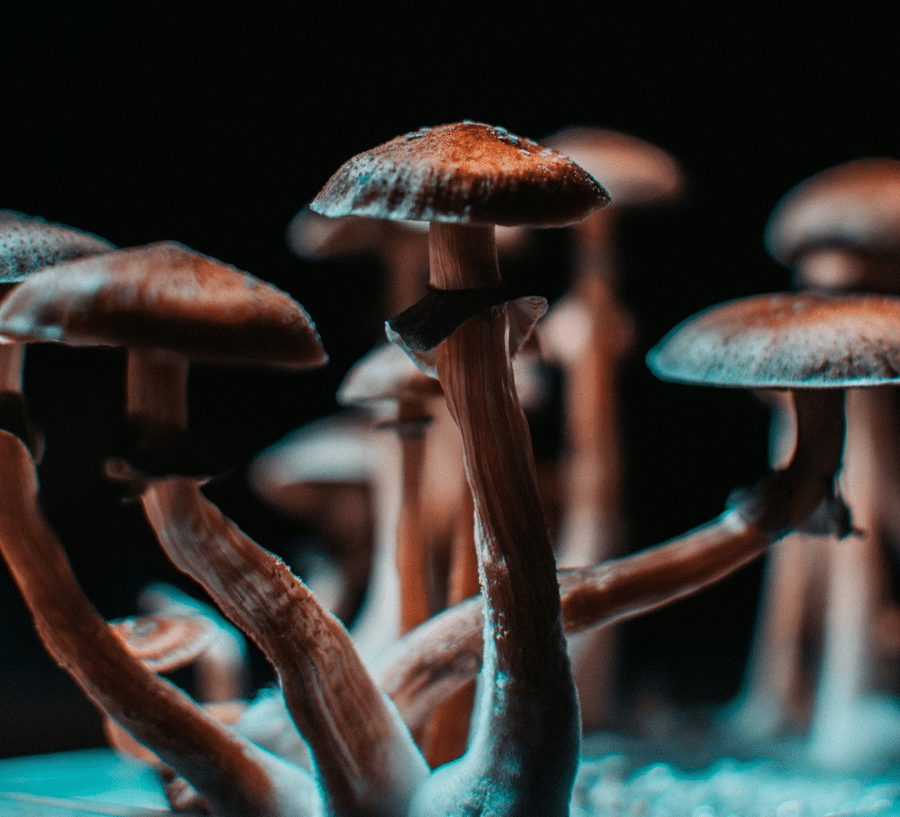
If you’re a part of the psychedelic community, you’ve probably heard about the groundbreaking research being done on psilocybin (magic mushrooms) and mental health. You’ve read about the incredible healing that people are experiencing and the amazing potential of psychedelics for treating depression, anxiety, chronic pain, obsessive compulsive disorder, and maybe most profoundly, PTSD.
A condition that only has 2 approved (and not very effective) drugs approved for its treatment, PTSD sufferers deserve better and more effective options. Enter psilocybin, a breakthrough treatment that has had profound and lasting effects against PTSD.
In today’s blog, we’re diving deep into the science and research on PTSD and psilocybin. Stay tuned for:
What is PTSD – the symptoms and the mechanisms behind it
How psilocybin works to treat PTSD and other mental health disorders
The research on psilocybin and PTSD
Recreational psilocybin use vs therapeutic psilocybin use
Psilocybin dosing
SSRIs and Traditional treatment vs Psilocybin
Psilocybin mushrooms at Sero
PTSD or post-traumatic stress disorder is a mental health condition that arises from one or more traumatic events. People usually develop PTSD symptoms within 3 months of a traumatic experience but they can also develop much later. Symptoms of PTSD fall into 4 categories:
Re-experiencing symptoms: flashbacks, recurring nightmares, and physical symptoms like racing heart or sweating when reminded of the event.
Avoidance symptoms: avoiding places, events, people, things, thoughts, or feelings that remind them of the traumatic event.
Arousal and reactivity symptoms: difficulty concentrating, difficulty sleeping, irritability, being easily startled, feeling tense or on edge, feeling aggressive or irritable/angry, engaging in risky or self-destructive behaviour.
Cognition and mood symptoms: constant feelings of anger, guilt, shame, or fear, trouble remembering important parts of the traumatic event, self-isolation, and loss of interest in activities previously enjoyed.
Some cases of PTSD resolve on their over time but many PTSD patients continue to experience these symptoms long after the traumatic experience.
PTSD stops what is called the ‘fear extinction process’. In a person without PTSD, areas of the brain work together to control the fear response. In a person with PTSD, this mechanism is disrupted, leaving them experiencing heightened fear and anxiety in response to harmless situations/stimuli they connect to a traumatic memory or situation. PSTD also disrupts the default mode network, your internal system that tells you where you are and who you are.
Why? Scientists have found that people with PTSD have a smaller hippocampus than others, reducing neuroplasticity (the brain’s ability to adapt and change. This disrupts the fear extinction process and affects memory. It makes sense then, why psilocybin (which is highly effective at increasing neuroplasticity) would help treat the underlying mechanisms of PTSD. More about that below.
So, we know that psilocybin promotes neuroplasticity, which in turn can restore the fear extinction process and memory retrieval process that was disrupted by PTSD. But how? It does this through the growth of new neurons and synapses in the hippocampus, which can reverse the protein drop from PTSD. And that is just the start, my friends.
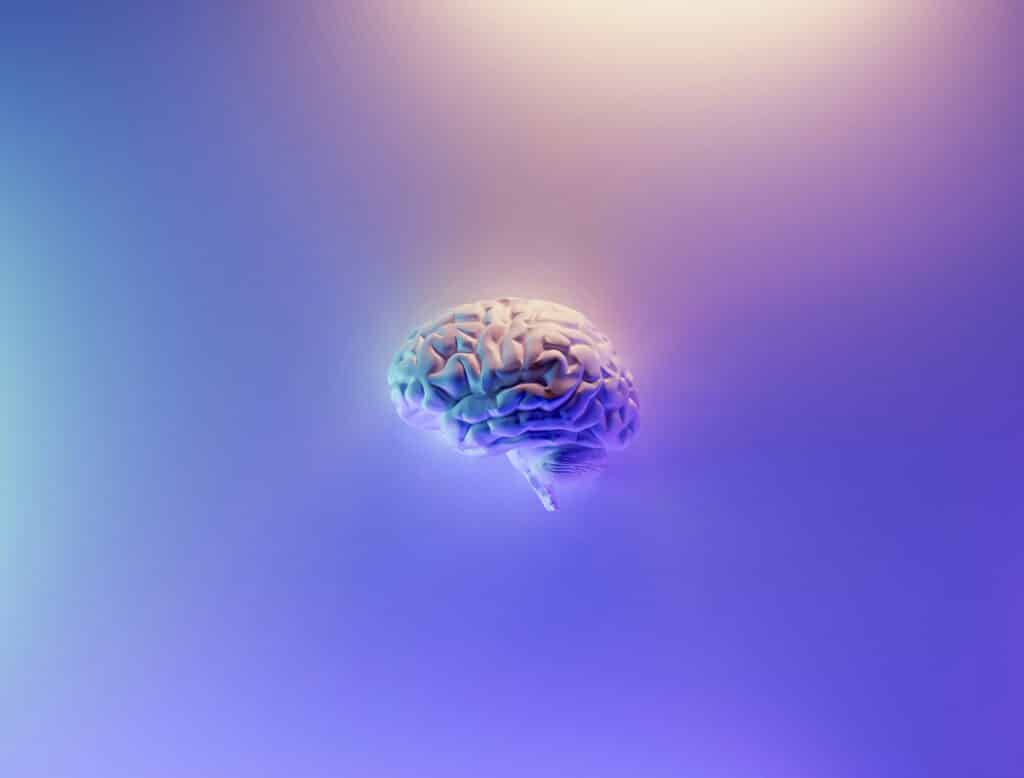
While neuroplasticity helps facilitate fear extinction, it also makes it easier for people to learn new things, create new habits, and change literally anything that is getting in the way of their happiness or living out their full potential. It’s like going back to your childhood – when you are malleable and everything is so much easier to grasp and master.
Neuroplasticity also makes it much easier to embrace new ways to thinking, and helps people make important mental connections they might’ve missed on their own.
PTSD patients have a disrupted default mode network – basically the network that tells us where we are and who we are. This is why when an army veteran hears a loud noise or flashing lights, they may feel vividly like they’re back in a war zone and are in direct danger. Essentially, that area of the brain that says “hey, don’t worry, you’re not at war, you’re at home” is disrupted.
Psilocybin works directly on the default mode network and can help repair these disruptions to bring PTSD sufferers back to themselves and to the present moment.
Psilocybin suppresses amygdala activity, allowing participants to process difficult memories and experiences without the strong emotional response. It can facilitate deep emotional breakthroughs that forever change the way they look at themselves and at the past. When combined with help from a trained facilitator or therapist, the potential for healing is profound.
Deep insights
Psilocybin promotes deep insightfulness and creative thinking – you are able to look at yourself and your situation in a new way and make connections between your own behaviour/thought patterns and your emotional state and situation.
Ok, we’re about to get real science-y on you. Let’s talk about the how psilocybin actually changes the structure of your brain through a few key processes:
Psychedelics have been shown to increase neuroplasticity – your brain’s ability to create new pathways and new connection between neurons. Why does this matter for PTSD? This process allows new habits, ways of thinking, emotional responses and positive habits to be solidified in the brain through new neural pathways in the brain.
With the increased neuroplasticity from psilocybin, the brain is literally rewired, allowing these new, healthy pathways to override the old, unhealthy trauma responses. Also, as we explained earlier, increased neuroplasticity helps restore fear extinction and memory – the major systems disrupted in PTSD patients.
Research has shown that psychedelics open this window of neuroplasticity within a few hours of exposure and this boost lasts for at least a month – that’s a month of time post-psilocybin to rewire your brain in a positive way with new ways of thinking, new emotional coping strategies, and new behaviours. It’s a powerful pathway to completely change your life and your mental and emotional state.
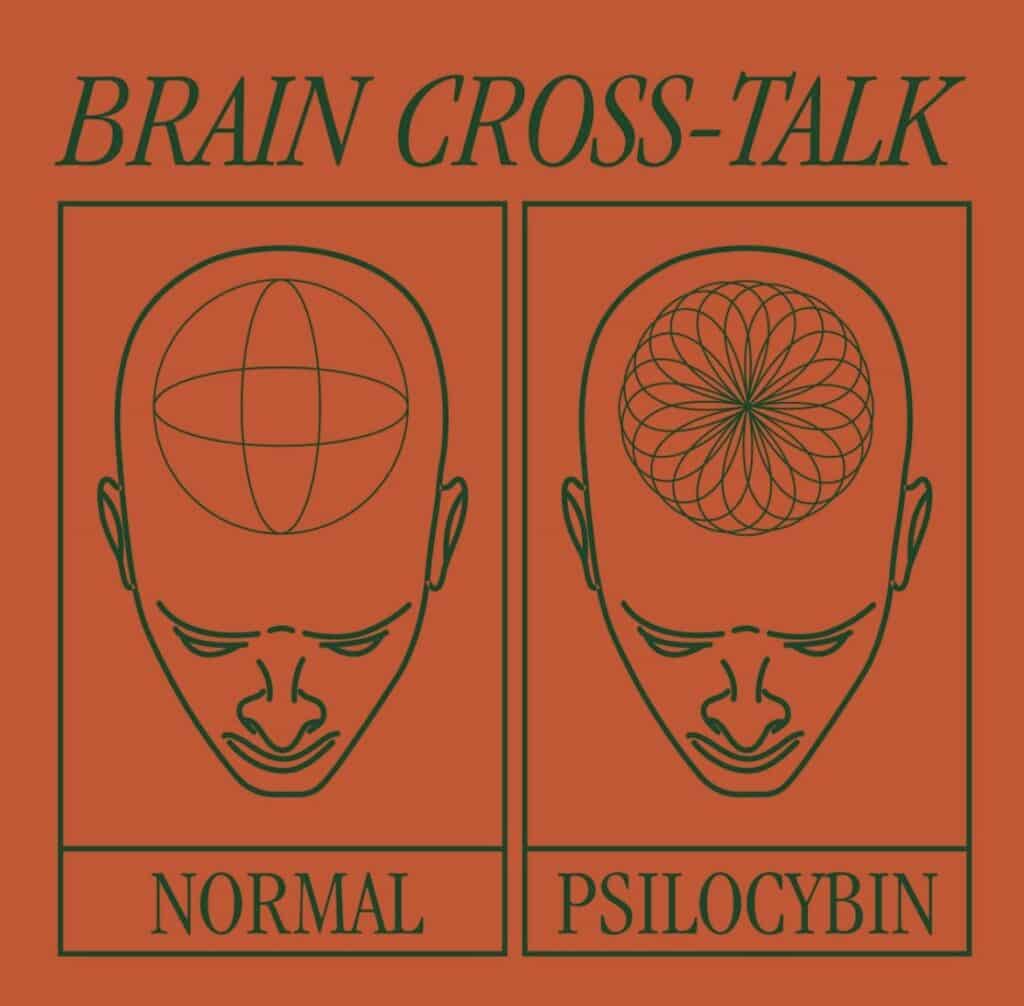
Neurons have structures called “dendritic spines” – they are responsible for sending and receiving signals from other neurons and also hold proteins that receive, process, and transfer these signals into the cell. Psilocybin increases dentritic spine formation, and keeps it elevated for 3 days – that means brain repair continues for days after psilocybin exposure.
This is the number of dendrites formed, their shape and their branching pattern. Psilocybin studies showed increased dendritogenesis for at least 72 hours after ingestion, with these new dendrites surviving for at least a month. To researchers, this suggests “the presence of lasting neuroplastic changes.”
This is the formation of synapses, which are the points of contact that transmit information between neurons in the brain. This is an essential part of the brain’s network. PTSD patients consistently show disregulated synaptogenesis. Psychedelics have been shown to help re-regulate this process and promote the growth of synapses in the brain.
Research has also shown that psychedelics reduce amygdala activity (an area in your brain responsible for the fear response) during emotional processing, allowing patients to work through difficult memories and traumas without the highly charged, fearful emotional responses that would otherwise be present. Most PTSD patients have increased amygdala response, making it difficult to process traumas, but with this area of the brain temporarily suppressed, they can more easily access and work through traumatic memories.
To sum up all the brain speak: Scientists believe that PTSD patients lose “complexity and density” in the dendrite structure. Post-psilocybin treatment, these dendrites are significantly restored. Also, posttraumatic stress disorder PTSD is connected with a drop in proteins in the brain transmitted by dendrites, which in turn disrupts neuroplasticity and fear extinction.
Post-psilocybin, scientists saw a return of these protein levels, which explains why a singe dose of psilocybin creates rapid and lasting fear extinction effects – the main mechanism believed to be disrupted in PTSD patients. Not to mention, psilocybin suppresses the fear response which allows you to face and release the trauma that started it all. Pretty amazing, hey?
In addition to all of these powerful brain processes, research that shown that psilocybin helps:
Create emotional breakthroughs
Increase empathy
Increase creative thinking and problem solving abilities
Increase mindfulness capacity
Increase feelings of acceptance and connectedness
Before post traumatic stress disorder was categorized as a mental illness, psychedelic drugs like psilocybin, LSD, and ketamine were commonly used to help treat what they then called ‘concentration camp syndrome’. One psychiatrist, Jan Bastiaans would administer a psychedelic substance to the patient, then guide them through the recall and processing of traumatic events. He worked with hundreds of patients and all but one saw moderate to strong improvements in a long-term follow up study.
At some point, as psychedelics were being used more recreationally, governments banned the substances despite their massive therapeutic potential.
And far before the West discovered psychedelics, indigenous communities around the world have been working with plant medicine for thousands of years, honoring them as a sacred source of healing and wisdom. In indigenous communities, plant medicines are ingested in ceremony under the leadership of a shaman or elder, with practices varying between communities. Regardless of the area however, it is a powerful and sacred experience undertaken with great care. As shamans have allowed outsiders to partake in their sacred ceremonies and share in the healing power of plant medicine, the rest of the world has been eager to take part.
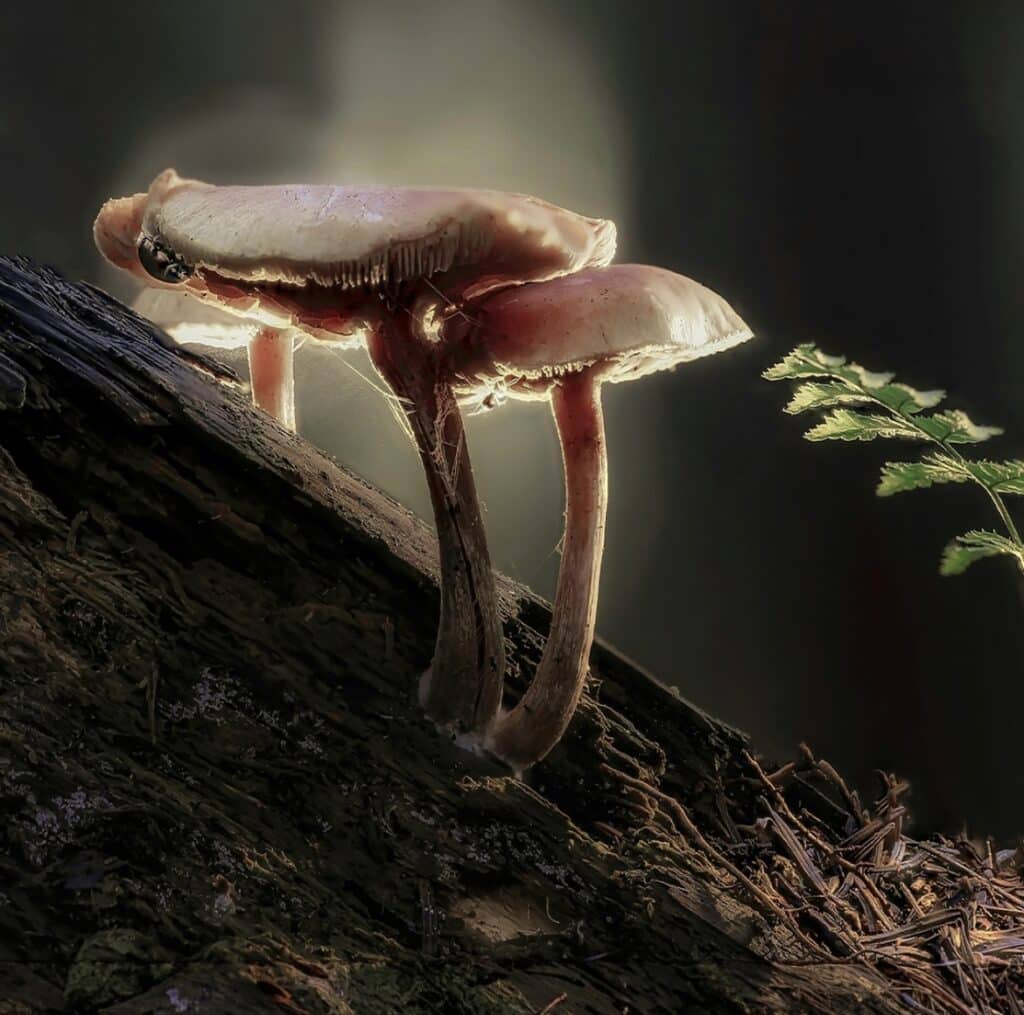
Thanks to all the compelling research being published, the FDA in the US has designated psilocybin (magic mushrooms) as a “breakthrough therapy” for treatment resistant depression and major depressive disorder. Breakthrough therapies are drugs that fill an unmet need in medicine. The FDA is working with companies to review clinical research and clinical trials and the process continues to move forward. Areas like Oregon and Denver, Colorado are at the head of the curve and have already legalized psilocybin under supervised conditions and both California and Michigan are pushing for similar status.
In Canada, Canadians can legally access psilocybin through a clinical trial, through their Special Access Program, or by getting an exemption. Health Canada has given psilocybin exemptions for patients with end-of-life anxiety and is starting to approve both therapists and suppliers to use psilocybin alongside psychedelic-assisted psychotherapy.
Public pressure is mounting to legalize psilocybin for therapeutic use as research studies and clinical trials keep confirming the incredible effects of psilocybin on a myriad of mental health conditions.
Let’s be real here, countless people have gone on a little magic mushroom trip with their buddies at a concert, a festival, or just wandering through the woods and all they experienced was a trippy trip, bro. So, what’s the difference between that and what we’re describing here?
Well, a few important things come together to turn a regular shroom trip into a powerful therapeutic, healing experience. It all starts with what’s called “set and setting”:
While recreational trippers might just be looking for a good time, a therapeutic experience starts with powerful intention setting – what you hope to explore and get out of the experience. This could be very specific like, “help me process and move on from this traumatic experience”, “show me how to move on from this grief or loss”, “help me release my addiction to negative thinking”, or something more general like, “mushrooms, show me what I need to know to heal”. This intention serves as a guide for your journey and what you might explore and learn in your experience.

Settings refers to the environment that you’re in when doing your journey and it turns out this is hugely important.
In most psychedelic therapy settings, participants will lay down on a comfortable surface with a blackout eye-mask, in a calm, quiet environment, with specially chosen music playing to help guide the experience. A facilitator or therapist will be nearby for support throughout if needed and to help with integration after the experience.
Integration in the days and weeks following the experience is also essential to get the most healing from your experience.
Why setting matters: Laying down with your eye mask removes all distracting external visuals and brings the focus inwards. It helps you directs your attention internally and allows you to focus on the wisdom and insights the mushrooms have to offer you.
On a spiritual level, it’s believed that mushrooms take you out of your fearful, chaotic mind, and into the pureness of your soul – the part of you that knows what’s best for you, that is afraid of nothing, that knows we are all connected, that you are always safe, and that life is a gift to be enjoyed. Your soul knows that we only exist now, that the past and future are just projections of the mind, and though many people live in these projections rather than in reality, life is actually only what is happening now. Psychedelics help remind us of this truth and bring us back to the present moment and to our true selves.
Psilocybin has benefits at every dose – from the smallest microdose to the most heroic macrodose. While everyone’s tolerance varies, here is a rough guide on dosage to align with your goals and intentions. Keep in mind, the best approach is always to start low and go slow, and make sure to work with a trained therapist or facilitator at the higher dosages.
A very low sub-perceptual dose that can be taken anytime. This dose is great for improved focus, memory, and mood.
When you just want a subtle boost of happiness and connectedness. You may experience enhanced visuals and insights, but the effect is still subtle enough for a social setting.
This dose will create a warm glow – most people will still feel present in their body, however psilocybin affects everyone differently. May be too high for a social setting depending on your personal tolerance.
At this dose, you will experience more of a true “trip” – think very heightened senses, enhanced visuals, deep insights, and a full body high.
Expect strong interactive thought patterns and auditory hallucinations, diminishing ego, heightened sense of self, and deep perspective changes.
At this dose, you’ll want to work with a trained facilitator and approach your journey with deep intention in a setting as described above. You can expect transcendental thoughts, out of body experiences, sacred hallucinations, time and space distortion, and temporary ego dissolution.
This level should only approached by those experienced with psychedelics. Again, it’s essential to undergo this journey with the correct set, setting, and a trained facilitator or mental health professional. You can expect a dissolved sense of self, blinding visual hallucinations, out of body experiences, intense catharsis, and in-depth information downloads.
For more information on dosing protocols, read our in-depth guide to microdosing plus our definitive guide to macrodosing.
Traditionally, SSRIs (selective serotonin reuptake inhibitors) and anti-psychotics have been used to treat PTSD, typically alongside some form of talk therapy and/or exposure therapy. While some patients benefit from these approaches, the success rates are low. In fact, some studies have shown that the most common antipsychotic, risperidone worked no better than a placebo against common post traumatic stress disorder PTSD symptoms. Other studies are finding that antidepressants don’t work well for people with chronic PTSD. Also, many of these drugs create severe and intolerable side effects.
So how do traditional methods compare to psilocybin for PTSD? SSRI antidepressants attempt to increase available serotonin that can bind to serotonin receptors in the brain. Psilocybin also acts on serotonin receptors but it takes things many steps further. Psilocybin actually changes how neurons in the brain connect to each other – essentially rewiring disconnected areas of the brain and allowing new pathways to form. It actually heals the brain on a deep level and helps people address the underlying trauma, thought patterns, and emotions at the root of their mental health difficulties rather than masking them with mind-numbing medications.
And while people need to take antidepressants daily for at least a few weeks to see any improvement, psilocybin has shown profound and lasting effects after a single dose. Psilocybin also has minimal potential side effects right after a macrodose – think light nausea, and occasionally a small temporary rise in heart rate and blood pressure.
Studies have shown that psilocybin can effectively treat PTSD by facilitating fear extinction, repairing the default mode network that is usually disrupted in PTSD sufferers, and allowing for processing of traumatic experiences without the strong emotional charge.
Psilocybin is consistently showing incredible promise as a PTSD treatment in studies around the world. It works inside the brain on a deep level to lower fear levels, process and reframe traumatic memories, and help PTSD sufferers return to the here and now.
Studies are consistently confirming the profound and long-lasting success of magic mushrooms to help treat anxiety, depression, PTSD, and other mental health conditions. Magic mushrooms improve mental health by modulating serotonin receptors, increasing neuroplasticity, facilitating fear extinction, helping process trauma minus the emotional charge, and helping to rewire disconnected areas of the brain. Because of its incredible success in treating mental health conditions, the FDA has granted psilocybin as a breakthrough therapy for depression.
Trauma and PTSD can manifest differently in everyone, which is why we created multiple distinct psilocybin blends to address the full spectrum of potential PTSD symptoms:
Formulated to help with depression and anxiety, Lite Brite is a blend of psilocybin mushrooms, passionflower, ashwagandga, and CBD to boost mood and quell anxiety. Users report feeling calmer, happier, more openminded, and more able to handle stress and enjoy life.
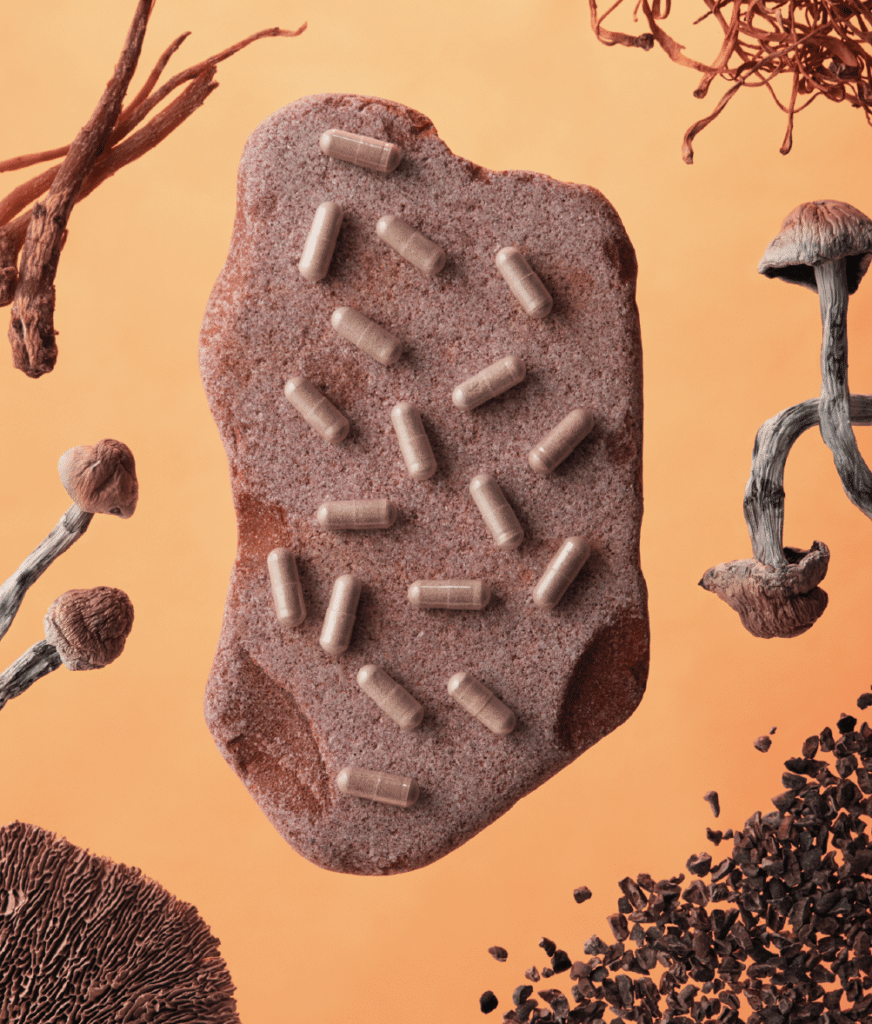
Those experiencing fatigue, low-energy, or difficulty sleeping alongside other PTSD symptoms, we created Connect Four to help with memory, boost mood, improve focus and memory, improve REM sleep, and create more calm.
Our formulas are designed to be stacked so we recommend trying each one out and if you’d like a little of this and a little of that, they work synergistically to improve your well-being.
Read our in-depth guide to microdosing for more on picking your protocol, dosage, and setting intentions.
Looking to embark on a powerful journey at a higher dose? Browse our Magic Mushroom Chocolate selection which contain 3.75 of sustainably harvested golden teacher mushrooms per bar. All of our microdose capsules and mushroom chocolate are handcrafted in Canada with high quality golden teacher mushrooms – the most studied strain known for facilitating introspection and powerful spiritual experiences.
Have any questions about psilocybin? Reach out to us anytime to chat with a Sero team member, psychedelic therapist, or experienced psychonaut. We are always here to help!